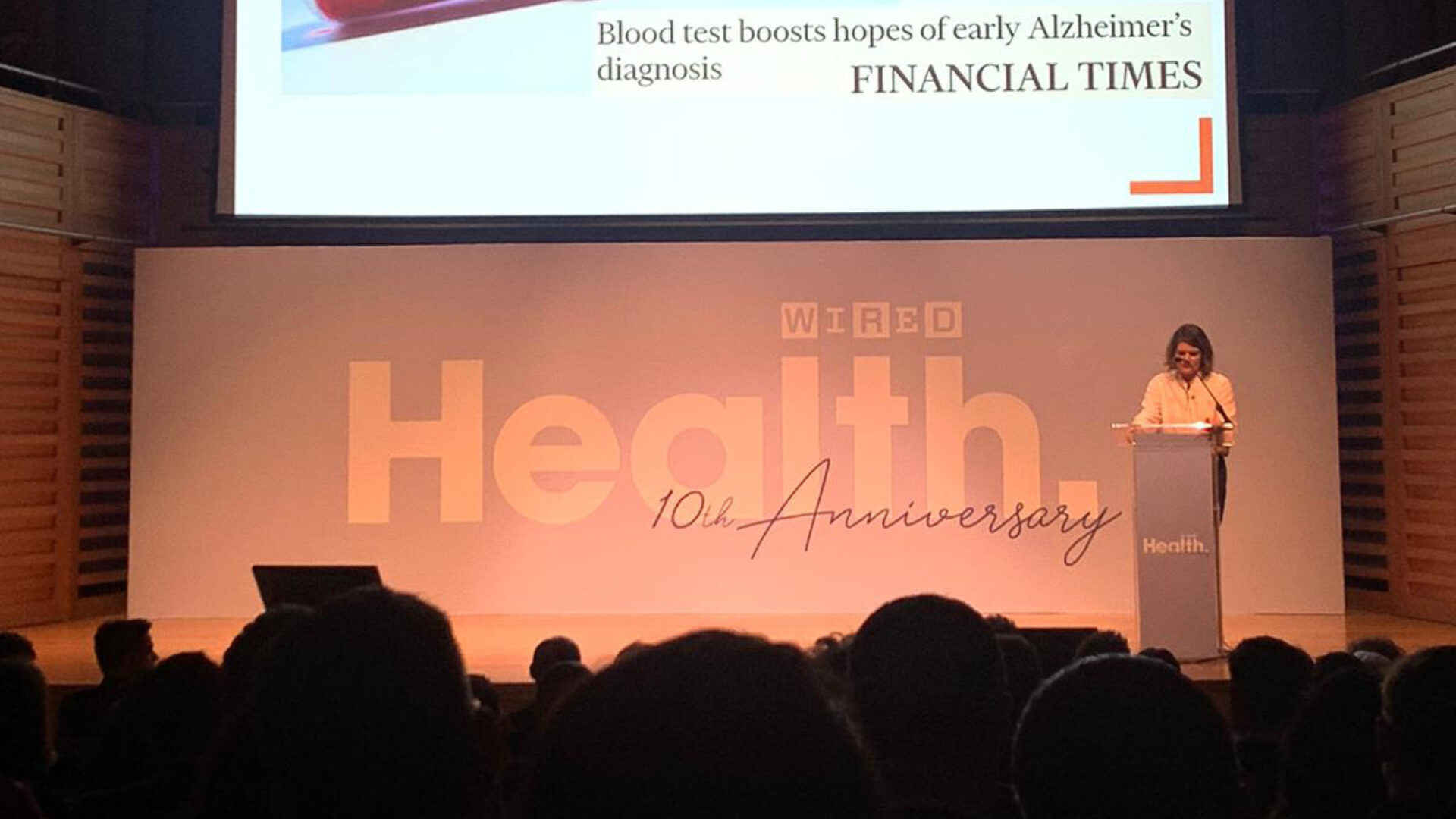2nd May 2024
BlogIn March, Jack and Ella went to WIRED Health at Kings Place in London where they got insight into all things health-tech. We caught up with them to hear about what they got up to and what were their key takeaways.
Have you ever wondered why some animals live longer than others – or why some creatures can live forever? When walking down the streets, have you ever thought about how boring the view is? Found yourself brushing aside that little worry about the state of the NHS, and whether it’s ever going to recover after the pandemic? Amazed that we lived through one? And what’s next? Climate change? AI? Technology that can help you with chronic pain, Parkinson’s, or neurosurgery?
All these questions, and many more, were answered (at least in part) at this year’s WIRED Health conference in London on the 19th March. Having had the distinct pleasure of attending with our colleagues from Havas Lynx, we now have the responsibility of sharing it with all of you.
Well, part of it – you’d be here for hours if we told you about all of it. So, in the interest of your time, we’ve picked out a few choice highlights.
Humanising our cities: Thomas Heatherwick
Heatherwick Studios is an award-winning architecture firm who has completed projects across the globe, including Coal Drops Yard and Google Kings Cross. As the leader of the studio, Heatherwick has emphasised the importance of making buildings that are as stunning from the outside as they are within. Buildings, Heatherwick says, are the backdrop of society’s life, and now they are boring. So boring, they can be harmful to your health. Modern building design has become too same-y, and there’s nothing interesting to catch your eye. What this means is it can actually be stressful. In light of this, Heatherwick calls for buildings to be much more interesting to the eye, and to actually promote wellbeing – it could be as little as making the first floor of the building’s exterior interesting. Working with neuroscientists, Heatherwick hopes to revolutionise architecture policy to ensure buildings better contribute to society and provide a point of interest for people walking past them.
To learn more, watch the talk here, have a look at the studio’s projects here or read Heatherwick’s book, Humanise: A Maker’s Guide to Building our World.
How to rebuild the NHS after the pandemic: Lucy Easthope
Professor Lucy Easthope is one of the UK’s leading emergency planners. During her talk, she explained how the UK had already planned for scenarios like the COVID-19 pandemic and that the NHS was a known crisis point. Emergency planners write a reasonable worst-case scenario (RWCS) as part of preparing for disasters. For the UK, the RWCS included the age of the buildings in the UK (1 in 7 were built before 1948), the fact there were workforce issues being postponed rather than dealt with, as well as austerity. With all these factors and more, it was to be expected that the UK would be hit hard by the pandemic and struggle to recover. Recovery from a disaster can be split into several distinct phases: the honeymoon phase – also known as lockdown one and characterised by things like the “NHS clap”; the disillusionment stage or the slump; and finally, the reconstruction phase. Currently, we’re still in the slump, leaving us with two options – to give up or make serious changes.
Easthope recommends that the point of focus must first be to rejuvenate and support the workforce, then to rebuild the infrastructure; while a disaster, the pandemic has given us the unique opportunity to reevaluate the structure of the NHS and to rebuild better than ever.
If you’re interested in hearing more, watch the talk here or read Easthope’s book, When the Dust Settles.
AI in healthcare: Andy Hickl and Susan Thomas
Already improving diagnostics, AI promises enormous implications for healthcare. Susan Thomas, Google Health’s clinical director, and Andy Hickl, CTO for the Allen Institute, took us through where they see it going. For Thomas, generative AI will transform consumer-healthcare interactions and fundamentally alter how healthcare systems work. This could be making healthcare professional communication with patients easier and more efficient, mitigating the need for health literacy and giving doctors more time with patients. In terms of research, AI could revolutionise our understanding of fundamental biological topics, which could then be applied to advancing healthcare. Wouldn’t it be great to understand immune system development or the operational system of cells? Or to be able to detect diseases like Alzheimer’s earlier – years before symptoms show – by modelling brain cell structure and function?
These impacts are just the tip of the iceberg for the ways that AI can drive healthcare forward – if you’re interested in hearing more, watch the panel here.
With talks on everything from technology to policy, AI to climate change, the 10th anniversary of the WIRED Health conference was an inspiring experience. If you’ve ever asked yourself any of the questions at the beginning of this article, ask yourself another – will you be going to WIRED Health next year?
